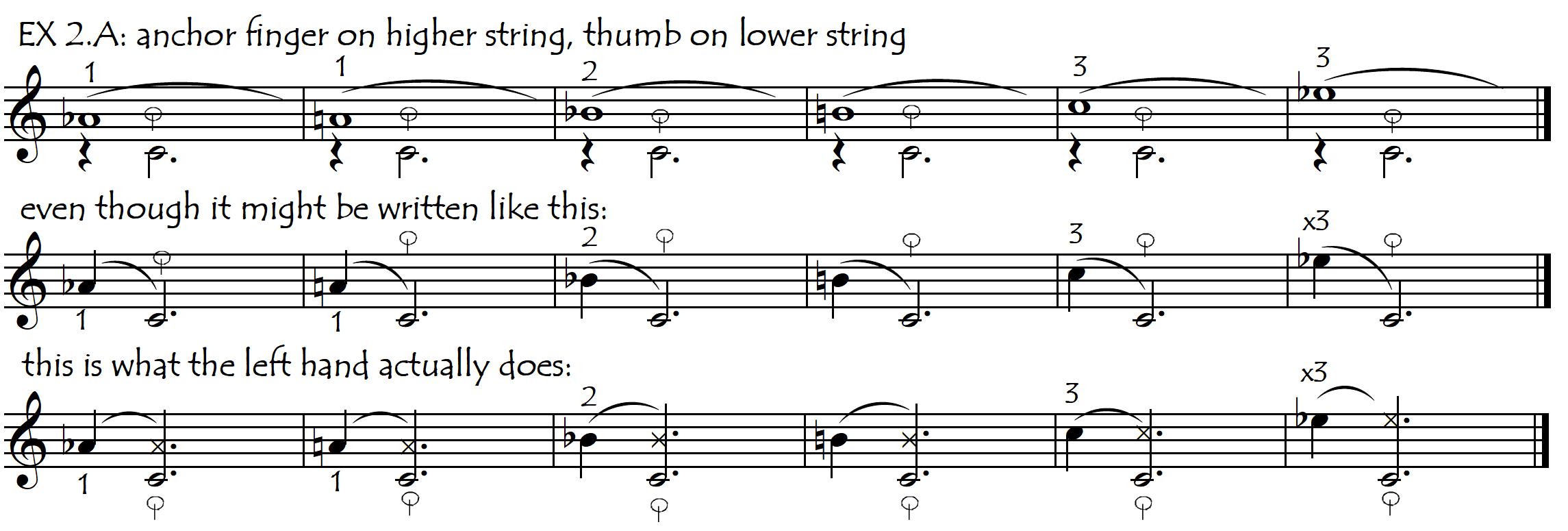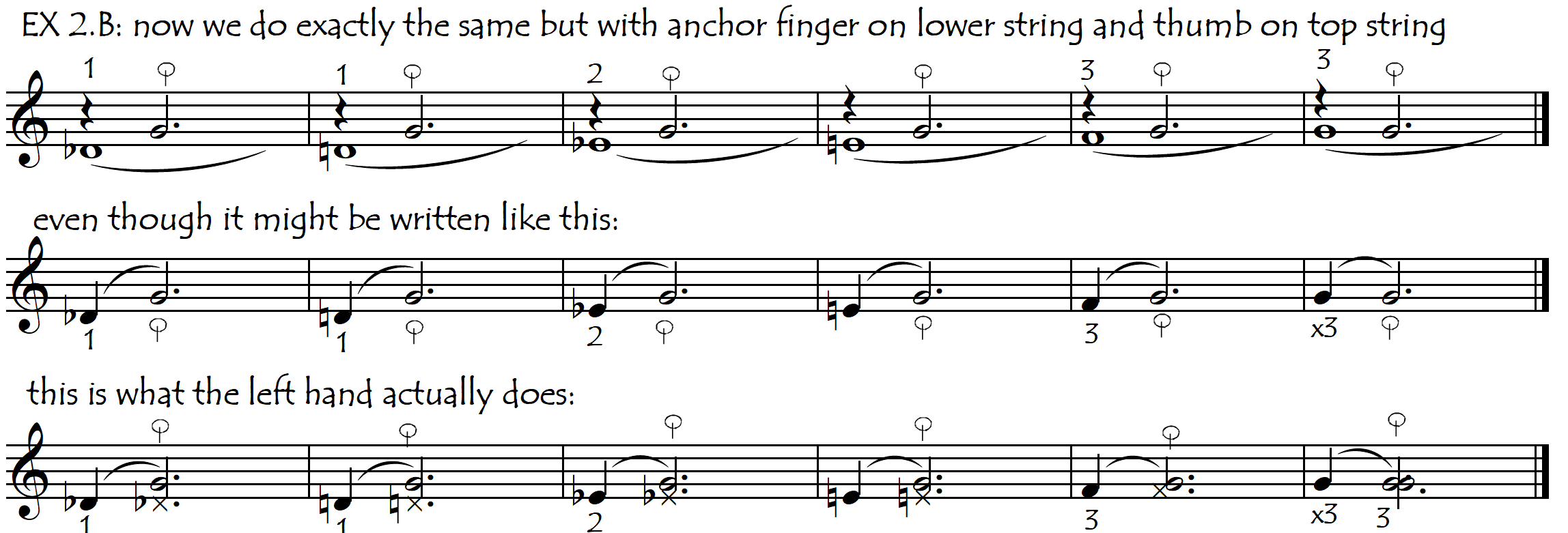Cello Thumbposition: Vibrato On The Thumb
Thumb vibrato is not easy or natural. When we use the thumb to stop our notes, we have no soft juicy fingerpad with which to make a beautiful vibrato. In fact our thumb’s vibrato is a little like the Achilles heel of a hero: along with “shifting to the thumb” its vibrato definitely tends to be the thumb’s weak link. But thumb vibrato is a skill that is well worth developing. The extreme ease with which we can open and close the gap between the fingers and the thumb, its strong positional sense, and its natural talent for playing fifths mean that the thumb is undoubtedly one of our most useful (but melodically underrated) fingers. Being able to vibrate on the thumb means that we can get the most out of its many talents and will make many passages easier to finger as it allows us to avoid those shifts that we would normally only do as a way to avoid using the thumb.

THE NEED FOR DOUBLE CONTACT
Vibrato on the thumb is made instantly very much easier if we keep another finger down at the same time on a neighbouring string. This double contact is like the difference between standing on one leg and standing on two legs. It gives greater stability to the hand, and helps us to achieve a beautiful whole-hand wobble (oscillation) that is difficult to obtain when stopping the thumb alone. Keeping another finger down also reduces the risk of the vibrato movement turning into a “roll” or of the thumb losing its correct position (intonation). Compare the ease and quality of the thumb vibrato in the following examples. Play the single-note examples with no other fingers stopped apart from the thumb:

Sometimes this “stabilising finger” is already down (because we have just used it), in which case we don’t need to think about consciously placing it. We only need to remember not to remove it! In the following examples the notes with the “x” notehead are stopped with the finger but not sounded with the bow.

Other times we actually have to place that “stabiliser” deliberately. Ideally this will be a finger that we will be using soon after the thumb, which we will simply place and stop (press into the string) anticipatedly.

At other times we can use any finger we like as the silent stabiliser on the neighbouring string:

In this way, the left hand is actually playing a double-stop during the long thumb note. The only reason the double-stop doesn’t sound is because we are only bowing on the “thumb string”. The finger on the other string is “working backstage” as it were: it is very important, but completely invisible (in our case, inaudible). As a good practice technique we can actually sound the double-stop with the bow. In this way we will really get used to using those stabilising-fingers on the silent string as second nature. Here is an example of this from the slow movement of Brahms 2nd Cello Sonata, notated here with double-time values to make sure we play it slowly:

Danil Shafran was a master at thumb vibrato as can be seen in videos of his playing. He shows us that it is absolutely possible to vibrate on the thumb just as expressively as a “normal” finger.
Here are some exercises to practice and develop this skill. First of all we will start with the thumb sounding on the lower string and the “stabiliser finger” on the higher string. Then, in the second series of exercises we will repeat exactly the same type of drills but this time with the stabiliser finger on the lower string and the vibrating thumb on the higher string:


PRACTICE MATERIAL
Vibrato On The Thumb: EXERCISES Vibrato On The Thumb: REPERTOIRE EXCERPTS
